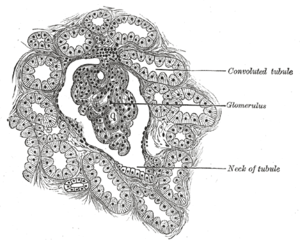Concentrations of Drugs in the Blood are a Balance Between Input and Output
- The concentrations of all chemicals in your body are the result of a balance between input and output.
- For drugs the input is usually a steady injection through an intravenous (IV) line or a periodic uptake through pills taken at regular intervals.
- The output of drugs is mainly through 2 organs, the liver and kidney.
- When the output equals the input a steady-state is attained and the concentration will no longer change:

This is a preview of How the Body Handles Drugs USING Kidney and Liver-INTERESTING FACT.
Read the full post (793 words, 5 images, estimated 3:10 mins reading time)
IMAGE PROCESSING
In this article, the basics of capturing an image, image processing to modify and enhance the image are discussed. There are many applications for Image Processing like surveillance, navigation, and robotics. Robotics is a very interesting field and promises future development so it is chosen as an example to explain the various aspects involved in Image Processing .
This is a preview of SHORT NOTES ON DIGITAL IMAGE PROCESSING-BIOMEDICAL NOTES.
Read the full post (2353 words, 3 images, estimated 9:25 mins reading time)
The Right and Left Hearts are Connected in Series, but are Folded Together to Form a Single Unit
- The right heart pumps blood only to the lungs; its output is low pressure (25 mm Hg)
- The left heart pumps blood to the rest of the body; its output is high pressure (120 mm Hg)
- Because the 2 hearts are attached they beat in synchrony
- The 2 atria receive the incoming blood- they pump extra blood into the ventricles
Oxygen Uptake in the Lungs is Increased About 70X by Hemoglobin in the Red Cells
- In the lungs oxygen must enter the blood
- A small amount of oxygen dissolves directly in the serum, but 98.5% of the oxygen is carried by hemoglobin
- All of the hemoglobin is found within the red blood cells (RBCs or erythrocytes)
- The hemoglobin content of the blood is about 15 gm/deciliter (deciliter = 100 mL)
- Red cell count is about 5 million per microliter
Each Hemoglobin Can Bind Four O2 Molecules (100% Saturation)
This is a preview of OXYGEN CARRIED IN BLOOD WHEN PERSON IS AT HIGH ALTITUDE-TUTORIAL PHYSIOLOGY.
Read the full post (1205 words, 4 images, estimated 4:49 mins reading time)

Image via Wikipedia
Basic Kidney Anatomy
- Kidneys paired, about 150 gm each
- Urine forming units:
- Cortex
- Medulla (lobed: renal pyramids)
- Cortex and medulla composed chiefly of nephrons and blood vessels
- Supplied by renal arteries (branches of descending aorta) and renal veins (branches of inferior vena cava)
- Urine collecting and expelling units:
- Calyces
- Renal pelvises
- Ureters
- Bladder
- Urethra
Although the Kidneys are Tiny Organs They Receive 25% of the Cardiac Output
Sex is Very Costly
- Large amounts of energy required to find a mate and do the mating: specialized structures and behavior required
- Intimate contact provides route for infection by parasites (AIDS, syphillis, etc.)
- Genetic costs: in sex you pass on only half your genes to your children
- Males are an expensive luxury- in most species they contribute little to rearing offspring
But There are Some Advantages
- More genetic diversity: more potential for survival of species when environmental conditions change
- Shuffling of genes in meiosis
- Crossing-over in meiosis
This is a preview of WHY SEX? -SEXUAL REPRODUCTION-TECHNICAL POINT OF VIEW FOR DISCUSSION.
Read the full post (949 words, 3 images, estimated 3:48 mins reading time)



